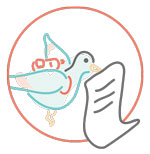By Dr. Sameer Hinduja
How social media helps youth cope with anxiety, depression, and self-harm
It can be easy for adults—whether they are educators or parents—to focus on the negatives of social media in the lives of teens today. This is understandable, because they are the ones who have to deal with the fallout when adolescents make mistakes online (cyber-bullying incidents, sexting cases, electronic dating violence, digital reputation drama, and similar forms of wrongdoing). Whether these moments are categorized as youthful indiscretion or instances of intentional harm towards others, they do happen. And we are left to help those teens pick up the pieces and ideally find a redemptive silver lining in it all.
However, it is worth pointing out and highlighting the fact that the vast majority of kids are doing the right things. For example, our recent research based on national data from Spring 2019 found that only 15 per cent of middle and high school students have cyberbullied others. That of course means that 85 per cent have not! Most youth are interacting responsibly, productively, and in meaningful ways. They are meeting the social and relational needs that all individuals have, and some of it is actually keeping them going.
Many young persons have found the support they need in various online communities, and it is helping them find the healing, strength, friendship, and love they are longing for.
More specifically, teens around the world have embraced social media to connect with others who can encourage them, mentor them, inspire them, and—most of all—show them they are not alone. And teens need this reminder frequently (I’m an adult, and I know I do at times). In our current information-based society and economy, there are hundreds of points of comparison among thousands of pieces of information lobbied at a person every single day.
This makes it easy to feel less than others—in looks, health, intelligence, and anything else on which we base our self-worth—which then leads to emotional and psychological pain. This sometimes manifests in insecurity, envy, anxiety, depression, and other related psychosomatic disorders or disturbances. To be sure, these negative outcomes can stem from any number of internal or external stressors in a person’s life. If left unresolved or unaddressed, though, they can interrupt or impede their healthy development and maturation into adulthood on some level.
When individuals struggle in these ways, the ability to be vulnerable in a seemingly safe space and unburden one’s heart to a sympathetic audience has promising and even transformative potential. Thankfully, many young persons have found the support they need in various online communities, and it is helping them find the healing, strength, friendship, and love they are longing for. Below, I explore some of the major Internet-based venues in which we are seeing these positives—outside of Facebook, Instagram, and Twitter—which teens have been using to make to make kindness go viral.
YouTube

YouTube has ranked as the second-most popular website behind Google for years, and in our most recent study, 41 per cent of teens upload videos to the site on a weekly basis. Because of the large quantity and variety of content and creators, YouTube remains an innovative way for youth to reflect on their emotional and mental health against the backdrop of others who share similar experiences through the videos they upload. Some content makers explain how they cope with personal stresses and struggles, how they specifically found help and the right strategies to overcome, or how self-care is essential for everyone to implement to maintain stability and psychological well-being. Others use their videos to destigmatize the topic of mental health and promote productive dialogue around its reality, causes and treatments.
While you might not think of YouTube as a social media platform, it remains a vibrant place where teens and young adults can confide in others for support (via public comments, private messages, or response videos) without necessarily having to reveal their identity if they do not wish to do so.
Tumblr

Created in 2007, Tumblr is a website that allows people to share creative writings and multi-media content in a simple and attractive short-form blog format with their followers. Followers in turn can “re-blog” that content to those that follow them.. In recent years, it has integrated more features that allow people to interact and chat with others. Primarily used by those under the age of 25, it allows for individuals to connect with each other about more personal topics such as anxiety, depression, self-harm, and suicide.
Apart from facilitating the provision of encouragement, inspiration, and guidance among users, Tumblr also has built in safety messages throughout their site. For example, users who search for certain trigger keywords such as #suicide, #cutting, or #pro-ana (i.e., “pro-anorexia”) via Tumblr, are directed to specific local and national organizations positioned to provide them help – even anonymously—if that user desires.
PostSecret
 Started in 2005, PostSecret is an ongoing art project that allows people to anonymously send their secrets to a specified address using only a postcard. The initial idea behind the project was to give people the opportunity to share things that they are not comfortable sharing with another person in real life—things that might invite judgment, ridicule, or humiliation. As the project became more popular, PostSecret began to utilize the Internet by posting the anonymous postcards onto a blog every Sunday for visitors to view.
Started in 2005, PostSecret is an ongoing art project that allows people to anonymously send their secrets to a specified address using only a postcard. The initial idea behind the project was to give people the opportunity to share things that they are not comfortable sharing with another person in real life—things that might invite judgment, ridicule, or humiliation. As the project became more popular, PostSecret began to utilize the Internet by posting the anonymous postcards onto a blog every Sunday for visitors to view.
The cathartic emotional benefit of airing one’s secrets in this private, protected manner—and reading those shared by others—reminds everyone that struggles are part and parcel of the human experience, and that we all have shame, regrets, fears, and pain in some form or fashion. Apart from the web-based platform, PostSecret has also integrated a chat option allowing users to interact with one another, either in a public forum setting or with private messages.
7 Cups of Tea
 For adolescents who want to talk to somebody about their emotional and psychological wellbeing without revealing their identity, both 7 Cups of Tea and IMAlive serve as anonymous counseling and crisis intervention chatting sites. 7 Cups of Tea allows people from anywhere in the world to specifically select what it is that they are struggling with, and then search for “Listeners” who are trained to engage each individual in an active listening session.
For adolescents who want to talk to somebody about their emotional and psychological wellbeing without revealing their identity, both 7 Cups of Tea and IMAlive serve as anonymous counseling and crisis intervention chatting sites. 7 Cups of Tea allows people from anywhere in the world to specifically select what it is that they are struggling with, and then search for “Listeners” who are trained to engage each individual in an active listening session.
The website is entirely volunteer-based and active listeners are not permitted to give advice, but instead assist in simply supporting the person and positively reinforcing them in ways that expose them to different coping mechanisms and strategies housed directly on the 7 Cups site itself. To be sure, in some situations listeners must serve as a segue to professional help, whether the situation requires it or the individual requests it. The site simply doesn’t provide a temporary fix, but directs individuals to long-term support options when necessary.
Emotional Baggage Check
 Emotional Baggage Check allows those with emotional baggage to “check” it into their site while also providing an email address. Then, another user (who wants to provide support) can “pick it up” and respond with the link to a song s/he believes can provide comfort and hope, as well as optionally provide an encouraging message in response. As an example, if I’m struggling with really missing my ex-girlfriend, I could post that in a message along with my email address. Then, someone else on the site will see it, read it, and choose a song they specifically believe will lift my spirits and help me out of the emotional mess I’m currently in. Those who are responding really do try to choose something ideal and meaningful to cheer you up because of their love of music and their sincere desire to introduce you to a song that perhaps has helped them similarly in the past. It’s a unique and powerful way to connect with others, and many teens and young adults have received support in this manner.
Emotional Baggage Check allows those with emotional baggage to “check” it into their site while also providing an email address. Then, another user (who wants to provide support) can “pick it up” and respond with the link to a song s/he believes can provide comfort and hope, as well as optionally provide an encouraging message in response. As an example, if I’m struggling with really missing my ex-girlfriend, I could post that in a message along with my email address. Then, someone else on the site will see it, read it, and choose a song they specifically believe will lift my spirits and help me out of the emotional mess I’m currently in. Those who are responding really do try to choose something ideal and meaningful to cheer you up because of their love of music and their sincere desire to introduce you to a song that perhaps has helped them similarly in the past. It’s a unique and powerful way to connect with others, and many teens and young adults have received support in this manner.
BoosterBuddy
 Using a method that the creators of the app describe as “gamification” or “gamefulness,” BoosterBuddy is designed to help young adults and teens who cannot find the motivation to start or complete their everyday responsibilities because they are dealing with certain mental health difficulties such as anxiety or depression. The app’s concept includes a character that the individual gets to choose to be their “buddy,” who is generally sleeping but can be woken up when certain daily tasks (“quests”) are completed and reported by the individual. These quests are intended to align with how the user is feeling.
Using a method that the creators of the app describe as “gamification” or “gamefulness,” BoosterBuddy is designed to help young adults and teens who cannot find the motivation to start or complete their everyday responsibilities because they are dealing with certain mental health difficulties such as anxiety or depression. The app’s concept includes a character that the individual gets to choose to be their “buddy,” who is generally sleeping but can be woken up when certain daily tasks (“quests”) are completed and reported by the individual. These quests are intended to align with how the user is feeling.
The overall reminder to us all when learning about these sites and apps is that technology—on the whole—can be really positive, helpful, and life-affirming. What is more, there are a plenty of (currently) less-popular sites and apps which haven’t gone viral yet but are still profoundly affecting and inspiring teens out there. And I think it’s totally worth it, even if only one teen is reached.
Dr. Sameer Hinduja is the Co-Director of the Cyberbullying Research Center, and is a Professor of Criminology.
Excerpted with permission from Cyberbullying.org














